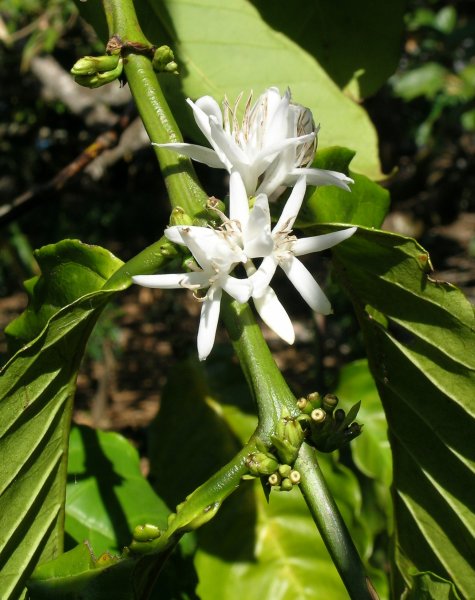When I arrived in Pakse, there were only two things I wanted to do: see a coffee plantation and see Tat Fan. On my first full day I came down with a mild stomach problem that has nagged me for the two days since, and I had a difficult time finding anyone running tours to my two destinations. Eventually I paid a guy with a saungthaew (passenger pick-up truck) to take me out alone, so the cost was fairly high ($20US). It was worth it, definitely an enjoyable day.
Anything I say in this blog should be taken with a grain of salt, but this applies doubly to material in this entry: my guide spoke almost no English, and I'm not in a position to do a lot of research as I write from an Internet Cafe in Pakse! For further information on coffee, you might find the Wikipedia article helpful. My knowledge of coffee is so slim I didn't know the difference between Arabica and Robusta ...
Coffee (Arabica) is grown here on the Bolaven Plateau, an area that is about 1300 meters above sea level - about 1200 meters higher than the town of Pakse, where I'm staying. Driving up you would hardly notice the height: no steep hills, no curving roads or switch-backs, just a steady uphill grade. But when you see Tat Fan, you begin to get a picture of the height of the plateau: Tat Fan falls about 100 meters through a massive cut in the side of the plateau. It's top is below the level of the plateau while its bottom is far above the surrounding countryside.
We visited the Sinouk plantation. They grow coffee and tea, with several other things mixed in - Durian being the most prominent. All picking is done by hand, so the kind of plant segregation practised in the First World to ease machine harvesting isn't practised. I think we're near the end of the harvest right now - cumulative acres of beans are lying on mats by the roadsides drying.

My pictures of beans were less than inspiring, so here is a picture of a coffee flower ...